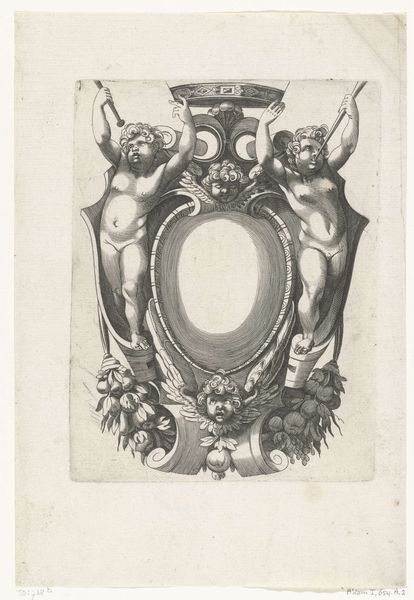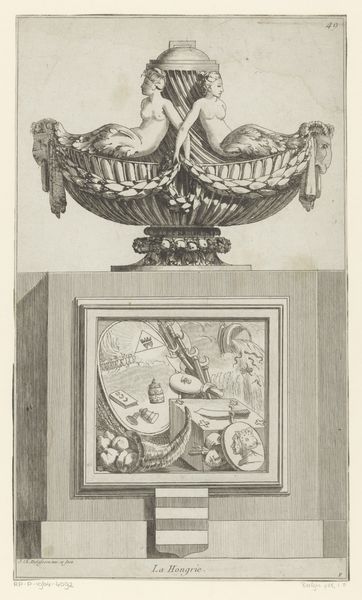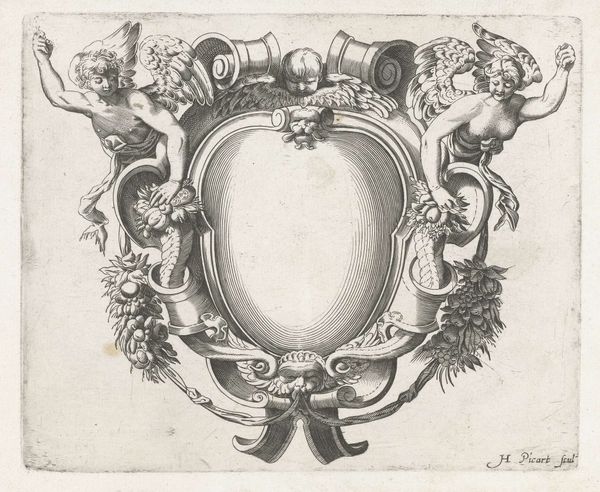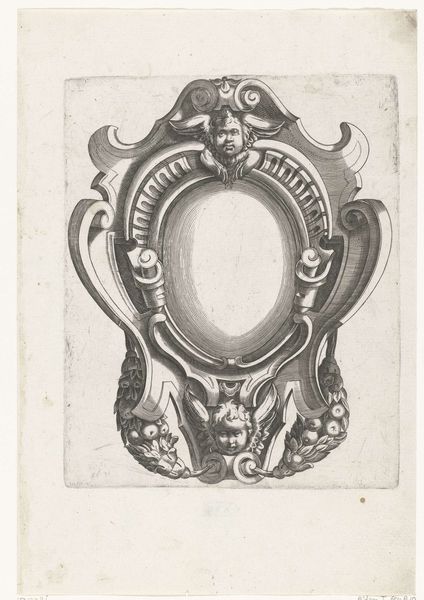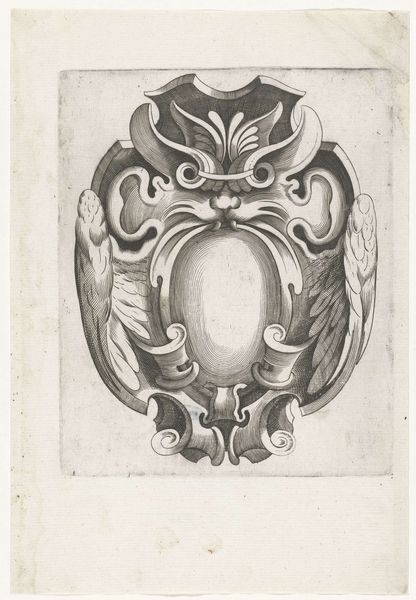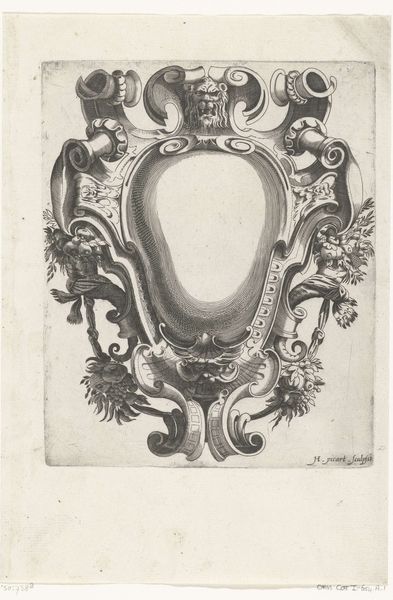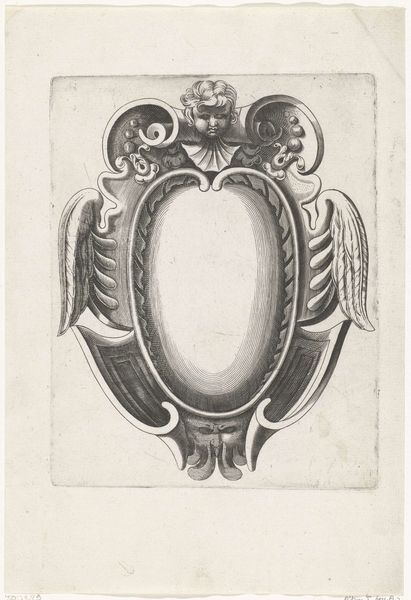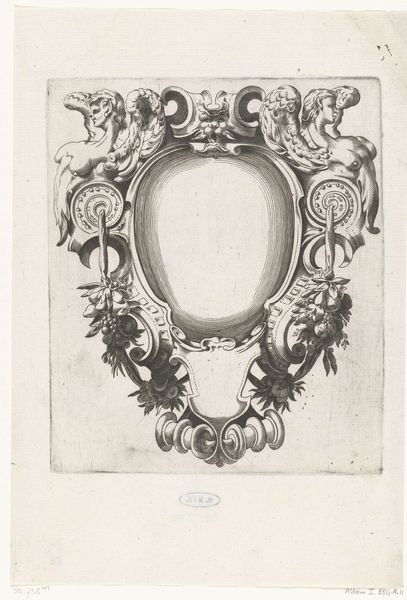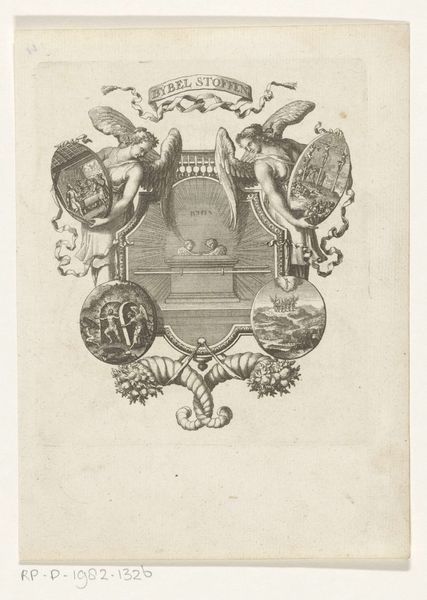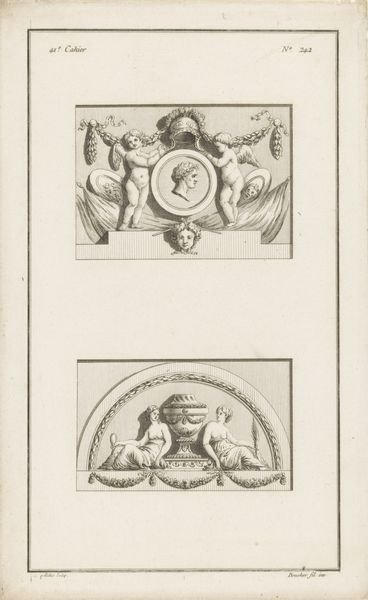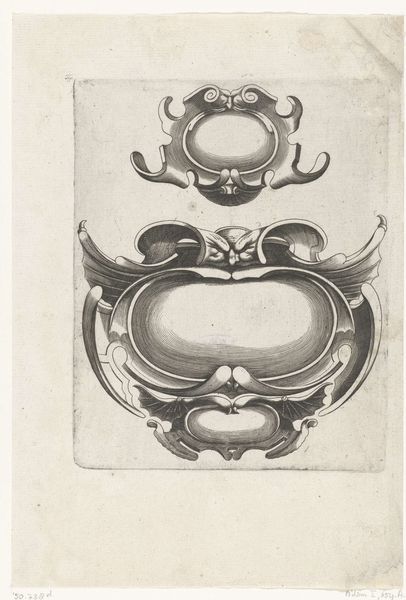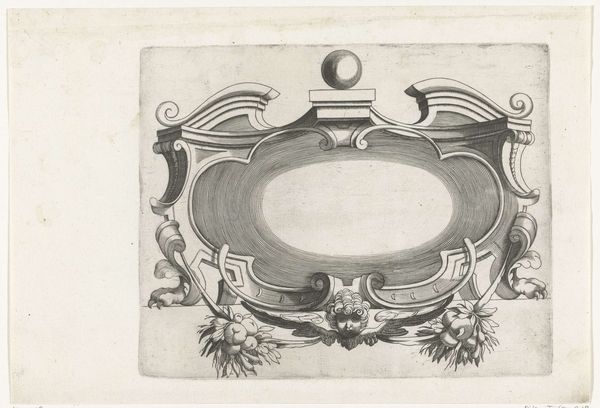
print, engraving
#
allegory
#
baroque
# print
#
old engraving style
#
figuration
#
engraving
Dimensions: height 170 mm, width 151 mm
Copyright: Rijks Museum: Open Domain
Curator: Editor: Here we have a baroque engraving from around 1628 by H. Picart: *Cartouche met twee draken en twee kinderen.* The cartouche is flanked by twisting dragons and supported by chubby children. It feels both decorative and a little menacing. What do you see in this piece? Curator: I see a fascinating intersection of power dynamics and symbolic representation typical of the baroque period. While seemingly decorative, the cherubs supporting the elaborate cartouche raise questions about class and labor. The dragons, coiled tightly, could be interpreted as symbols of control or repressed anxieties bubbling beneath the surface of outward ornamentation. Does the presence of these mythological creatures undermine or enhance the intended message? Editor: I hadn't considered the power dynamic implied by the cherubs "supporting" the structure. Is the contrast of cherubs with the dragons intentional, to heighten that tension? Curator: Precisely! The baroque period often juxtaposed seemingly disparate elements to create complex allegories. These depictions often spoke to anxieties of the time, around gender, power, and the changing social landscape. These themes were almost exclusively commissioned and seen in wealthy households, perpetuating and promoting the social status and class structure of the time. Have the roles or perceptions of cartouches evolved, and is it only meant to portray and uphold elitist power structures? Editor: I guess I hadn't considered how much of this piece would represent power and class. Thanks, I'll look at these works from a more critical perspective. Curator: Absolutely! Recognizing art as embedded within intersecting identities such as social and cultural contexts, and gender constructions, provides more inclusive and critically insightful perspectives into art of the time.
Comments
No comments
Be the first to comment and join the conversation on the ultimate creative platform.
